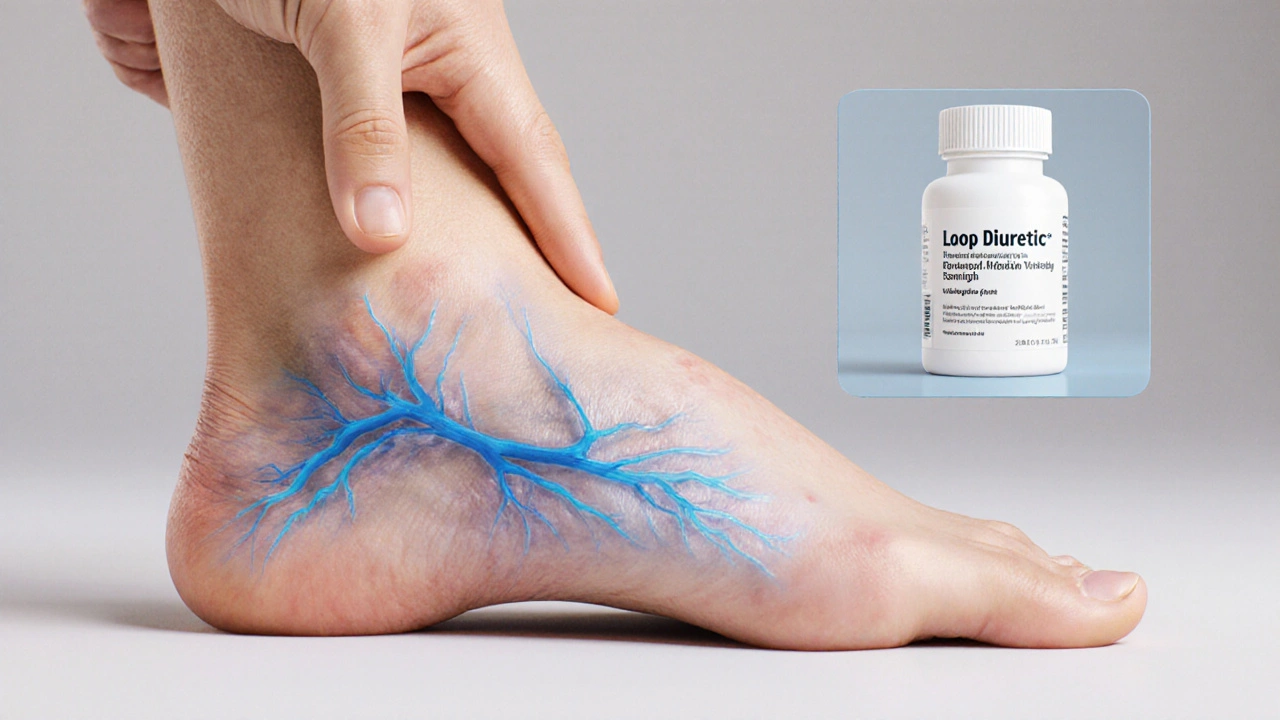Diuretics—often called "water pills"—help your body remove extra salt and water. Doctors use them for high blood pressure, heart failure, swollen legs, and some kidney problems. If you or someone you care for has a prescription for a diuretic, this page collects clear, practical info so you know what to expect and what to watch for.
There are three main types you’ll see: thiazide, loop, and potassium-sparing. Thiazides (like hydrochlorothiazide) are common first choices for blood pressure. Loop diuretics (furosemide) are stronger and used when fluid builds up fast, such as in heart failure. Potassium-sparing drugs (spironolactone, amiloride) help keep potassium from dropping and are used alone or with others. Knowing the type tells you how fast it works and which side effects matter most.
Each type has a typical use: thiazides for long-term blood pressure control, loops for rapid fluid removal, and potassium-sparing for balancing electrolytes or treating hormonal issues. Your healthcare team picks the one that fits your condition and other meds.
Diuretics change fluid and electrolytes, so common issues include thirst, increased urination, dizziness, and muscle cramps. A big one is low potassium with thiazides and loops—this can cause weakness or heart rhythm trouble. Potassium-sparing diuretics can do the opposite and raise potassium, which is risky if you also take ACE inhibitors or certain supplements.
Practical tips: take your pill at the same time each day (morning is best to avoid night-time bathroom trips), weigh yourself daily to spot sudden fluid gains or losses, and stay hydrated but don’t overdo salt substitutes unless your doctor says so. If you feel faint, have severe leg cramps, or notice a rapid heartbeat, call your provider—those are signs your electrolytes or blood pressure might be off.
Also watch drug interactions. NSAIDs like ibuprofen can blunt diuretics’ effect. Combining certain blood pressure drugs with potassium-sparing diuretics raises the risk of high potassium. Labs matter: providers usually check blood pressure, creatinine (kidney function), and electrolytes within days to weeks after starting or changing a dose.
Older adults often react more strongly—dizziness and low blood pressure are more common. If you care for someone elderly, encourage slow position changes (sit up slowly), keep a list of medications handy, and make sure lab tests happen on schedule.
Want more specifics? Browse the articles tagged here for drug-by-drug guides, side effect comparisons, and safe online pharmacy tips. If you have questions about a particular drug or symptom, ask your pharmacist or doctor—diuretics work well, but they need a little attention to stay safe.

Explore how diuretics and newer drug classes treat edema, when to use each, side‑effect management, and practical tips for safe, effective fluid control.
View more
In the quest for optimal management of edema and hypertension, there are several promising alternatives to Lasix available in 2024. This article explores ten notable options, including Torsemide, known for its effectiveness in heart failure, and Spironolactone, a potassium-sparing diuretic. From diuretics like Bumetanide to angiotensin receptor blockers such as Valsartan, each alternative presents unique benefits and considerations. By examining these options, individuals and healthcare providers can make informed decisions about the best treatment plan tailored to specific needs.
View more